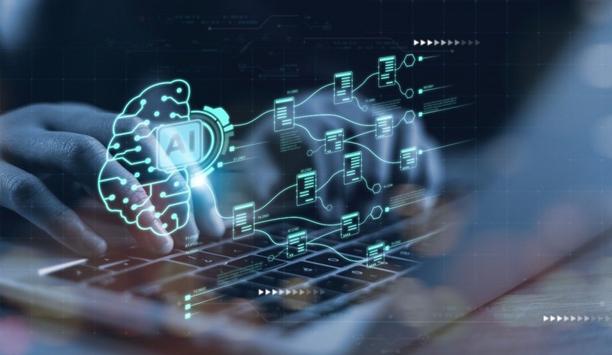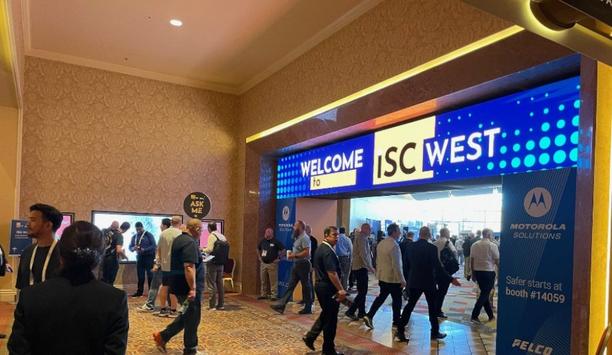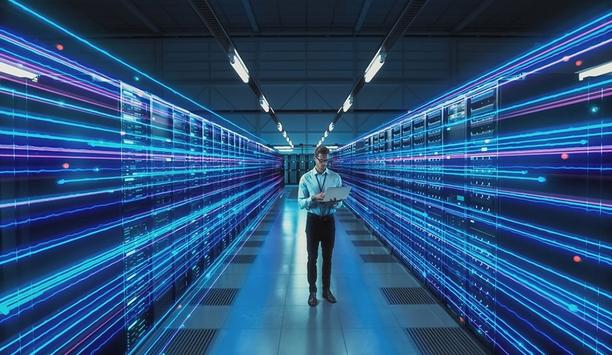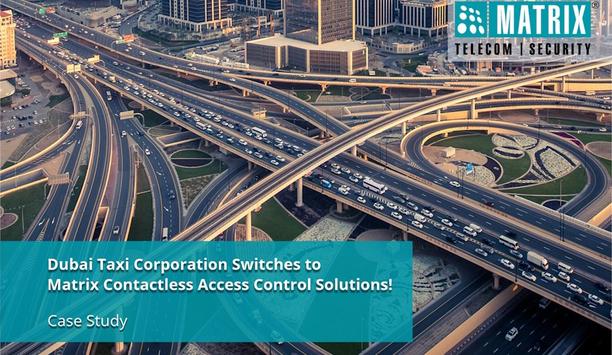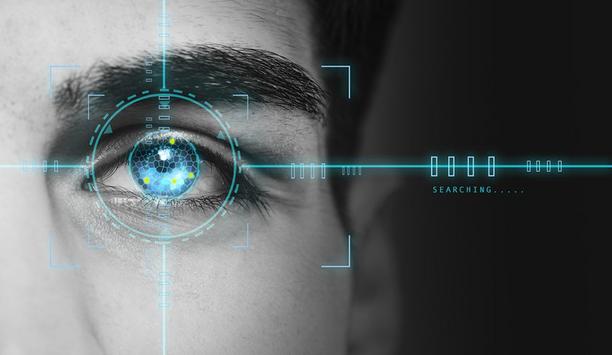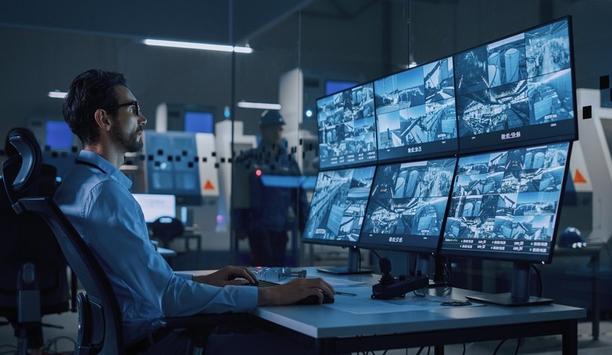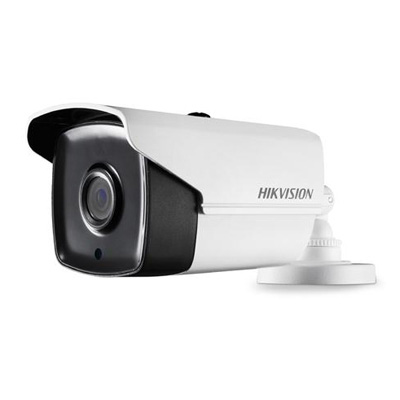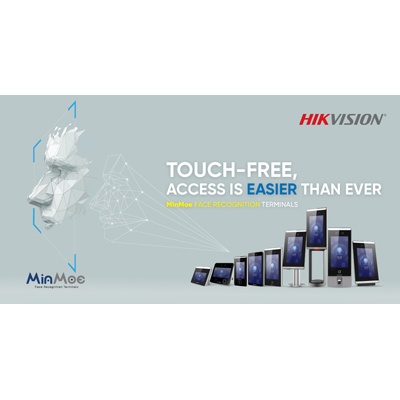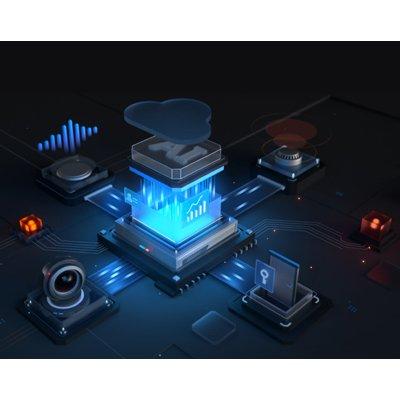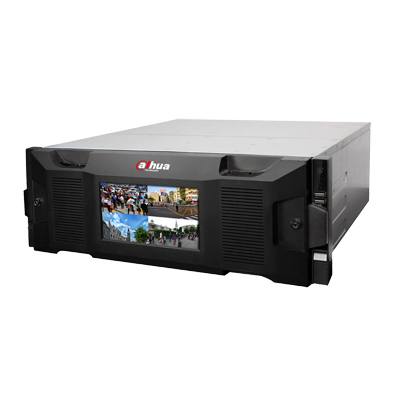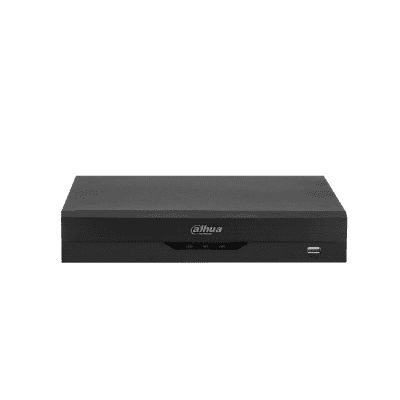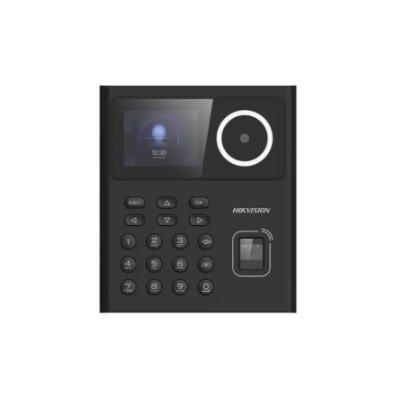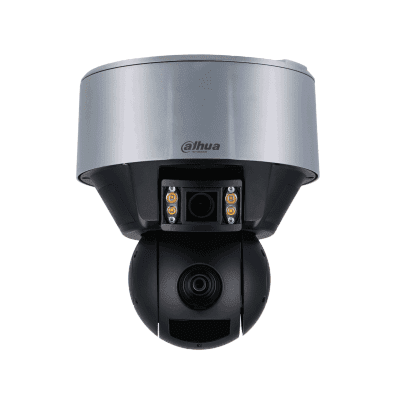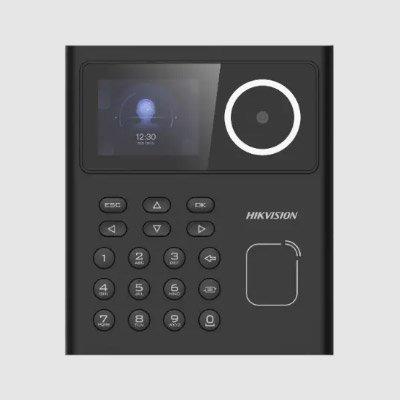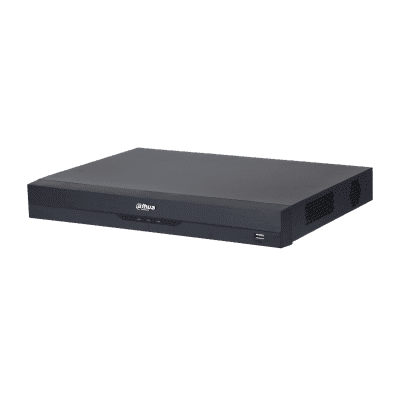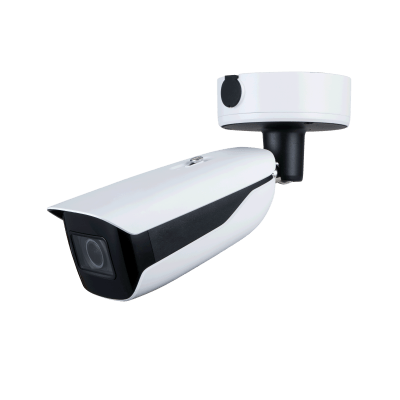Facial recognition systems
iDenfy, a globally recognised pioneer in regulatory technology specialising in identity verification (KYC), anti-money laundering (AML), and business verification (KYB), introduced its new KYC solution for Shopify merchants. The new app is listed on Shopify as a user-friendly, no-code solution for Shopify users who don’t want to build an ID verification solution from scratch. Automated verification system iDenfy’s integration provides online businesses with an automated verificati...
As Taiwan's security industry continues to evolve with technological advancements and increased diversification, various vertical markets are poised for significant growth. Secutech, scheduled for 7–9 May 2025 at the Taipei Nangang Exhibition Centre, aims to capitalise on this burgeoning demand. Around 400 international and local exhibitors are set to showcase the latest technologies and solutions across six zones and pavilions at the fair, which serves as a vital platform to connect secu...
Colorado’s SB25-143 is now headed to Gov. Jared Polis after clearing the Colorado General Assembly on April 4, 2025. The measure lifts an existing moratorium on new use of facial recognition technology – for certain applications – by Colorado public schools that has been in place since 2022, while extending the prohibition applicable to all other uses past July 1, when it is currently set to expire. Use of the technology in schools Colorado school districts have su...
As the world emerges from the pandemic's shadow five years after it spread globally, everything seems to be back on track. Air travel volumes have matched and even surpassed the pre-COVID level. But are they truly “back”? The pandemic did more than just bring masks and border closures. It fundamentally reshaped the world, accelerating digitalisation beyond recognition and irrevocably redefining security paradigms and human behaviour. Heightened security concerns Standard solutions...
DeterTech, a pioneer in intruder detection and identification, is proud to announce the immediate availability of SmartSpray® for rental or purchase. It is considered a game-changer in tackling retail crime as it enables police to forensically link masked offenders back to the scene of their crime, even weeks after they’ve left the store. Effective CCTV storage Retail crime is at its highest level on record, with over 2,000 incidents of violence and abuse per day Retail crime is at...
HID, a pioneer in trusted identity solutions, introduces the HID Amico™ biometric facial recognition readers—designed to address the growing demand for secure, seamless and contactless access. This preview highlights the dependable choice for businesses prioritising convenience and security, with availability expected later in 2025. Advanced levels of security HID Amico provides advanced levels of security, reducing unauthorised access risks Leveraging industry-leading, NIS...
News
Neurotechnology, a provider of deep-learning-based solutions and high-precision biometric identification technologies, announced the release of the MegaMatcher Criminal Investigation 2025.1 solution, with new features designed to enhance forensic capabilities for law enforcement agencies. Latent print recognition “We’re constantly evolving our technologies to meet the challenges faced by forensic professionals in real investigations,” said Denis Kačan, head of product at Neurotechnology. “With improved latent print recognition, more complete match results and case linking capabilities, this release delivers the tools experts need to handle difficult cases with greater speed, confidence and clarity.” Latest MegaMatcher Criminal Investigation version The latest MegaMatcher Criminal Investigation version received major upgrades that improve latent print management, processing and matching: New Enhancement Filters: New automatic enhancement filters improve the clarity of ridge patterns in latent prints with a single click. The system intelligently enhances prints found on textured or complex surfaces, increasing visibility while preserving forensic integrity. Latent-to-Unsolved Latent Search: When no match is found among known prints, investigators can initiate a search against other unsolved latent prints. This helps uncover links between cases and accelerate investigations. Latent Print Annotations: Examiners can now add comments directly to latent prints, improving collaboration, documentation and decision tracking throughout the forensic process. Latest version of Neurotechnology’s recognition algorithm Algorithm provides high identification accuracy, particularly in complex or low-quality latent print cases MegaMatcher Criminal Investigation works seamlessly with MegaMatcher ABIS, the company's powerful automated biometric identification system, which has latent print matching capabilities. The system uses the latest version of Neurotechnology’s latent print recognition algorithm, which ranks among the top performers in the NIST Enhanced Latent Fingerprint Technologies (ELFT) evaluation. This algorithm provides high identification accuracy, particularly in complex or low-quality latent print cases. AI-powered solutions for law enforcement Neurotechnology provides AI-based tools for identity management, surveillance and criminal investigations, designed for law enforcement agencies. The MegaMatcher product line includes MegaMatcher ABIS for high-accuracy biometric matching and MegaMatcher Criminal IDRS for biometric and biographic data capture. The company’s SentiVeillance video surveillance systems provide real-time recognition, tracking and event detection using Automated Licence Plate Recognition (ALPR), face recognition and human and vehicle object-related sets of algorithms.
Digitalising access brings many benefits, but greater knowledge is needed when it comes to making the right long-term decision. As a pioneer in access solutions, ASSA ABLOY and its over 60 thousand employees worldwide work every day towards a safer and more open world. ASSA ABLOY series of videos In a new series of videos, experts in various specialisms within ASSA ABLOY share their expertise on digital access, including the complexities to overcome and the range of benefits for those who get digital access right. This new series of Expert Talks aims to better inform decision-makers – including security managers, directors, consultants and specifiers – about the key topics needed to consider when digitalising access. Digitalising access upgrades security “The first talk in our series covers Security,” says Thomas Schulz, Director & Head of Marketing DAS at ASSA ABLOY Opening Solutions EMEIA. “Security may seem obvious, almost a ‘given’ these days. But digitalising access upgrades security in many valuable ways, not all of them as obvious as you might imagine. Our Security talk also maps out some facts and topics that forward-thinking teams should be aware of.” Mechanical and digital must work together for security ASSA ABLOY’s security experts agree that the symbiotic affinity between mechanical and digital security One message upon which all ASSA ABLOY’s security experts agree is the symbiotic relationship between mechanical and digital security. ASSA ABLOY’s decades of experience in mechanical locking situates it uniquely to ensure security applies consistently across mechanical and digital access. Digital does not replace mechanical. Its additional layers of security and identity verification benefit the customer by helping to provide a concrete ROI from digitalisation. Within the access device, mechanical and digital components must work together – the mechanical backbone is as important as the digital technology inside. The growing importance of cybersecurity for digital access In a world of emerging and evolving security threats, building users need the reassurance of reliable access control to work productively. As security converges, moving beyond mechanical and cyber ‘siloes’, the right digital access solution enables building management teams to define exactly who goes where, and when, across all their sites in an easy and intuitive way. “It’s not enough to have robust, reliable and secure access control devices if they don’t have the right cyber protection. Having a robust, reliable, and secure mechanical foundation for access control devices is not sufficient if they lack proper cyber protection,” explains Milivoj Simeonovski, Director & Head of Information and Cyber Security, ASSA ABLOY Opening Solutions EMEIA. ASSA ABLOY market report Cybersecurity compliance will soon be mandatory for any digital product sold within the EU market For this reason, cybersecurity compliance will soon be mandatory for any digital product sold within the EU market. Many ‘traditional’ security staff remain uncertain about its relevance. In research for one recent ASSA ABLOY market report, 55% of security professionals surveyed did not recognise four important regional laws and directives which are (or soon will be) critical to cyber- and mechanical security. “Staying ahead of these regulations and ensuring digital access adopters understand their importance was another key motivation for making this video – and for the series as a whole,” he adds. Security and access management stakeholders This first in the series of ASSA ABLOY Expert Talks can help security and access management stakeholders face future challenges with greater confidence. Forthcoming Expert Talk videos will cover ASSA ABLOY’s four more key topics in digital access: sustainability, reliability, convenience and innovation.
Managing visitor access efficiently has become a critical component of business operations across industries. With increasing security concerns, regulatory compliance, and the need for seamless visitor experiences, organisations must adopt robust visitor management solutions. Traditional methods such as logbooks and manual tracking are no longer sufficient to meet the security and operational demands of 2025. Digital solutions Modern businesses require digital solutions that not only enhance security but also improve efficiency Modern businesses require digital solutions that not only enhance security but also improve efficiency, ensure regulatory compliance, and create a frictionless visitor experience. From healthcare and corporate enterprises to manufacturing and critical infrastructure, every sector faces unique challenges that can be addressed with a strategic approach. Introduction Organisations need to consider multiple factors while implementing visitor management strategies. The reception area serves as the first line of security for any organisation, making it imperative to deploy a structured and efficient system. Introducing a robust solution helps streamline visitor processes, enhance security, and improve operational efficiency. Key challenges An efficient visitor management system extends security with additional measures at visitor sign-in, ensuring safety and compliance with modern regulations. Here are some key reasons why organisations should prioritise it: 1. Strengthening Security Measures Security threats such as unauthorised access, workplace violence, and data breaches are on the rise. Implementing stringent authorisation protocols, real-time visitor tracking, and automated alerts helps mitigate these risks effectively. 2. Enhancing Surveillance Across Premises A comprehensive visitor management system helps organisations maintain a digital record of visitor information, making it easier to identify unauthorised individuals and potential security threats. 3. Optimising Investment While traditional logbooks may seem effective, they lack efficiency and security. A digital system eliminates the need for manual record-keeping, reducing costs related to security incidents and administrative overhead. 4. Ensuring Compliance and Transparency Transparent communication between security personnel and staff is critical. A modern system ensures accurate record-keeping, helping organisations comply with regulatory requirements like GDPR. 5. Managing Visitor Flow Efficiently A software-enabled system maintains an auditable trail of activity, making it easier to analyse visitor trends and track frequent visitors. Additionally, pre-registration options enable a seamless check-in experience. The way forward Organisations must transition from outdated visitor management methods to intelligent, automated solutions tailored to modern security demands. 1. Digitalisation of Visitor Entry Cloud-based solutions enhance security by eliminating manual errors, ensuring efficient visitor check-ins, and maintaining accurate records. 2. Touchless and AI-Powered Authentication Touchless check-ins for Visitors using QR codes, facial recognition, and biometric authentication improve security while ensuring a seamless visitor experience. 3. Automated Pre-Registration and Screening Pre-registered visitors receive digital passes, allowing quick check-ins while reducing congestion at entry points. Automated screening processes help maintain health and security protocols. 4. Real-time Monitoring and Alerts AI-driven platforms provide real-time monitoring and instant alerts for unauthorised access, ensuring swift security responses. 5. Integration with Access Control Systems Integrating the systems with existing access control solutions enables controlled entry to restricted areas and enhances overall security. 6. Data Compliance and Privacy Protection Secure data storage, encryption, and access control mechanisms help organisations comply with global data protection regulations while safeguarding visitor information. Conclusion Outdated visitor management methods pose significant security and compliance risks. Organisations must adopt modern solutions to enhance security, streamline visitor experiences, and ensure regulatory compliance. A robust visitor management system enables seamless communication between security personnel and front-desk staff, offering a secure and efficient visitor experience. Does this sound like a great fit for the organisation? Or are they looking for a tailored solution to enhance security and visitor management? If they’re looking to take the next step in upgrading their visitor management strategy, explore solutions that offer a balance of security, compliance, and ease of use. The right system will help them create a safer and more efficient workplace while ensuring that visitor interactions are streamlined and secure.
DigiCert, a pioneer global provider of digital trust, announces the integration of UltraDNS into its flagship DigiCert ONE platform. The combination automates essential management processes between Public Key Infrastructure and Domain Name Systems—two foundational components of digital trust—to reduce outage risks and streamline operations. Streamline PKI operations DigiCert, ONE addresses challenges by enhancing cryptographic agility and automating key processes DNS teams manually change records with every PKI update. But as disruptors like shortened certificate lifespans and quantum computing drive faster change cycles, manual processes can no longer keep up. Frost and Sullivan advises organisations to automate manual processes and streamline trust solutions to keep digital interactions secure and flowing. DigiCert, ONE addresses these challenges by enhancing cryptographic agility and automating key processes that keep digital trust infrastructure aligned. Streamlined domain validation "Managing certificates and DNS records and automating domain validation through one platform is quickly becoming a necessity as we enter the quantum age," said Deepika Chauhan, Chief Product Officer at DigiCert. “Getting ahead of the reduction in certificate and validation lifespans is critical for business operations. Now teams can easily analyse certificate and DNS data to predict potential issues before they occur, create and enforce policies that span certificate and DNS configurations, and enable end-to-end encryption.” Improved uptime and business continuity Advantages of combining PKI + DNS: Unified Digital Trust Management – Centralised management, visibility and control over certificates and DNS, reducing security complexity and creating faster threat response. Improved Uptime and Business Continuity – Eliminate PKI-related outages and ensure the availability of critical services. Automation for Security & Compliance – Automate renewals and DNS configurations to reduce human error and compliance risks. Enhanced Performance & Security – Integrated PKI and DNS with DDoS protection, advanced traffic routing, and application security for cyber resilience. Automated trust management "Managing separate DNS and PKI solutions adds complexity, increases costs, and introduces potential points of failure," said Joern Lubadel, Global Head of Product Security at B.Braun. "The move to a converged digital trust platform to mitigate security threats like DNS hijacking and DDoS attacks and streamline operations by automating the management of certificates is the sort of innovation that large enterprises need.” “The promise of a more resilient, efficient, and secure digital infrastructure will help companies focus on delivering exceptional customer experiences and get out of the business of onerous integration projects." Efficient certificate management “When we were deciding which PKI solution to use, we sought to ‘future proof’ our operations by choosing a vendor that could deliver a comprehensive suite of tools to support our growth,” said Grace Young, Chief Innovation Officer at Wattwatchers. “We didn’t want to deal with multiple vendors for different parts of our operations like DNS and IoT, which just adds complexity, costs, and potential points of failure. DigiCert's digital trust platform enabled us to automate certificate management, allowing our small team to deliver an efficient, resilient, and secure digital infrastructure for our enterprise customers. This allows us to prioritise customer value without being slowed down by complex configuration on the back end.” Unified security infrastructure "By integrating UltraDNS into the DigiCert ONE platform, DigiCert is addressing a critical challenge that enterprises face—managing fragmented security infrastructures that steer to inefficiencies, outages, and security vulnerabilities,” said Ozgun Pelit, Senior Industry Analyst, at Frost & Sullivan. “This unified approach enhances automation, resilience, and crypto agility, ensuring organisations can securely scale their operations while preparing for the post-quantum future. As certificate lifecycles shorten and cyber threats grow more sophisticated, solutions that streamline digital trust management will become essential for enterprises navigating an increasingly complex security landscape." Customers who would like more detailed information about PKI and DNS working together to strengthen security and streamline operations are encouraged to join DigiCert and a select group of industry pioneers from around the world at one of DigiCert’s 2025 Trust Summit Roadshows.
Lanner Electronics, a pioneer in edge AI computing solutions, is proud to announce the launch of the EAI-I510 Edge AI Computer, designed to enhance city safety through AI-powered video analytics. Featuring the latest Intel® Core™ Ultra Series 2 (Arrow Lake H) processors, the EAI-I510 is engineered to support advanced video analytics applications such as intrusion detection, facial recognition, and law enforcement assistance for first responders. Real-time AI inference EAI-I510 enables smart surveillance and security monitoring with improved accuracy Built to meet the growing demand for real-time AI inference at the edge, the EAI-I510 enables smart surveillance and security monitoring with improved accuracy and efficiency. The EAI-I510 redefines high-performance computing with next-generation Intel® Core™ Ultra Processors (Series 2), delivering exceptional processing power and optimized energy efficiency for seamless data handling and ultra-responsive performance. AI-driven edge applications Equipped with built-in Intel® ARC™ graphics, XMX GPU, and an integrated NPU, the Intel Core Ultra Processor achieves 2.5x the AI performance of its predecessors, reaching up to 99 total platform TOPS of AI processing power. This advanced architecture accelerates real-time AI analytics while maintaining outstanding power efficiency, making it an ideal solution for AI-driven edge applications. EAI-I510 features EAI-I510 features two 2.5GbE RJ45 and two 10GbE RJ45 ports for high-speed networking For I/O connectivity, the EAI-I510 features two 2.5GbE RJ45 and two 10GbE RJ45 ports for high-speed networking. It also includes two COM ports, four USB ports, two DisplayPort 1.2 outputs, and four DIO ports, providing versatile interface options for various deployment needs. The system also supports expansion capabilities with up to 96GB DDR5 6400 MHz Memory, one PCIe x8 slot, one M.2 2230 E-Key slot for WiFi 6/6E, one M.2 3042/3052 B-Key slot for LTE/5G, and two Nano-SIM slots, ensuring robust wireless communication options. Intel’s latest Core Ultra Series 2 processors “The launch of EAI-I510 marks a significant milestone in AI-driven security solutions, empowering law enforcement agencies and first responders with real-time intelligence,” said Spencer Chou, Senior Director of Edge AI Product Division at Lanner. “By leveraging Intel’s latest Core Ultra Series 2 processors, we are enabling enhanced AI-powered video analytics for intrusion detection and facial recognition with low-latency AI inference at the edge, all while maintaining energy efficiency”. Latest in AI-driven security technology Lanner will debut the EAI-I510 at ISC West 2025, taking place in Las Vegas, Nevada, from April 9-11, 2025. Visitors can explore the latest in AI-driven security technology at booth #33068, where Lanner will also showcase its all-new Edge AI computers powered by NVIDIA AGX Orin for high-performance video analytics applications.
Functional films and adhesive tapes are powering the tech revolution, from smartphones and EVs to displays, semiconductors, and packaging. Lightweight, versatile, and sustainable, these materials are key to innovation across industries. With 5G, AI, and clean energy driving demand, the opportunities are vast—but so are the challenges, like innovation bottlenecks, supply chain instability, and intensifying market competition. That’s where FILM & TAPE EXPO 2025 comes in. Innovative Film, Tapes Everything Flagship event runs October 28-30, 2025, at Shenzhen World Exhibition & Convention Centre Hosted by RX Kuozhan, this flagship event runs October 28-30, 2025, at Shenzhen World Exhibition & Convention Centre (Bao’an). Spanning 160,000 m2 alongside five co-located shows, it brings together 3,500+ exhibitors, 100+ forums, and 165,000+ buyers. Themed “Innovative Film, Tapes Everything”, it’s the launchpad for deals, growth, and visibility. Here’s how it delivers via market reach, industry collaboration, and networking. Market reach: Open new doors Land Clients, Close Deals, Go Global Connect with 60,000+ buyers from functional films, adhesive tape manufacturing, die-cutting, consumer electronics, automotive, label packaging, and beyond. Over 3,000 TAP invited matchmakings allow them face-to-face with decision-makers, speeding up deals. Year-Round Exposure 500,000+ buyer database powers targeted, multi-channel marketing, showcasing the strengths and boosting the brand 365 days a year. Entering the Chinese Market China's advanced manufacturing ecosystem, combined with its growing demand for high-end materials and technologies, provides a fertile ground for business growth Industry collaboration: Stay ahead Full Supply Chain Coverage Showcase alongside pioneers in films (e.g., optical, protective, lithium battery), tapes (e.g., electronic, industrial, medical), adhesives, raw materials, and processing equipment—spanning the entire ecosystem. Highlights of Past Notable Exhibitors (Partial List). Four Targeted Zones New Energy Materials and Equipment Zone: This area encourages quick penetration of unexplored new energy lithium batteries and photovoltaic key materials markets by film and tape companies International Pavilion: In collaboration with Japanese, South Korean, and European associations, chambers of commerce, and consulates, this area facilitates international exchange and cooperation. Intelligent Manufacturing Zone: This area is designed to pave a way forward with intelligent solutions. Highly Functional Material Zone: Have face-to-face technical exchanges and discussions with product R&D designers and find highly functional material suitable for new product applications. Networking: Build connections Connect directly with top decision-makers to unlock potential partnerships Beyond a trade show, it’s a networking hub. With 30+ forums and 4 signature events—including an opening ceremony, VIP dinners, and media interviews—they’ll connect with 4,000+ industry pioneers, spot trends, and unlock partnerships. Four Targeted Zones. Shenzhen International Film and Tape Technology Innovation Summit Forum 2025 Shenzhen Battery Membrane Materials Technology Sharing Forum 2025 New Energy Die-cutting Technology and Key Materials Seminar 2025 Coating Industry High-Quality Development Forum 2025 Shenzhen International Label Innovation Technology Summit Forum 2025 Electronic Industry Adhesive Materials Technology Seminar 2025 Thermal Conduction and Heat Dissipation Materials Technology Innovation Development Forum 2025 Shenzhen International Mini/Micro LED Industrial Chain Development Summit Forum 2025 Shenzhen International Intelligent Cockpit and Vehicle Display Summit Forum 2025 OLED Technology Roadmap and Industry Development Seminar 2025 Join Film & Tape Expo 2025! From October 28-30, 2025, in Shenzhen World Exhibition & Convention Centre (Bao’an), this is the chance to ignite growth, link with global buyers, and shape the industry’s future. Spots are filling fast—secure them now!


Expert commentary
For businesses today, loss prevention is no longer just about safeguarding inventory from theft. While retail theft makes frequent headlines in the United States, and is indeed the leading cause of shrinkage, The National Retail Foundation (NRF) has reported that process failures, operational inefficiencies and employee theft also drive significant losses. Legacy security systems In 2022, the shrink loss is estimated to be $ 120 billion in the United States, and that’s for retail alone. Industries like hospitality, healthcare, manufacturing, and transportation all face similar challenges even though loss and inefficiency take different forms in each of these fields. As shrinks from theft and operational inefficiency have already put margins of companies under pressure, we are increasingly seeing more businesses demand AI-powered security systems with advanced video analytics, capable of addressing both security and operational inefficiencies that their legacy security systems could not. Understanding the full scope of loss Package theft is a common problem in commercial buildings, with which box detection in mailrooms Starbucks’ recent announcement of reinventing its franchise operation due to faltering sales is a great example of how operational efficiency can take a toll on business revenue. In restaurants or hotels, failing to anticipate customer flow can lead to long wait times or inefficient use of staff, frustrating guests. Take, for example, in hospitals, inefficient patient flow management can lead to overcrowded waiting areas and delays in care, compromising patient health. Similarly, in manufacturing, poorly optimised assembly lines create production bottlenecks, delaying output and raising overhead. Package theft is another common problem in commercial buildings, with which package detection in mailrooms can mitigate loss from deliveries. These invisible leaks creepingly drain profits across industries, and require future-proof solutions that not only confirm what’s already known but also provide actionable insights for improvement. Transforming security into a powerhouse for efficiency Progress continues to advance across these areas, fuelling optimism for what lies ahead. Thanks to the rise of artificial intelligence and data analytics, some security solutions are already integrated with facial recognition and licence plate detection capabilities, as well as Virtual Fences that help ensure that only authorised personnel or vehicles enter sensitive areas. This can be especially useful for manufacturing environments, where controlling access to high-risk zones and protecting valuable assets are critical. Some modern security systems can even offer more than a watchful eye, doubling as a data analytic tool beyond traditional surveillance limits. Heat mapping in security AI technology Heat mapping in security AI technology analyses ways of movement and behaviour in a retail environment Modern security systems are now capable of tracking foot traffic, analysing customer behaviour, and even identifying bottlenecks in real time by incorporating different technologies such as heatmapping, people counting and queue length monitoring for long lineups. Heat mapping in security AI technology analyses patterns of movement and behaviour in a retail environment by visually representing areas with high foot traffic. With tracking over time and identifying potential vulnerable and hot spots for potential theft and fraud, resulting in change of store layout, deploy additional resources in high traffic areas and physical security placement. Predictive security analytics AI people counting in security utilises sensors and cameras to accurately track the number of individuals entering and exiting a space in real time. This data helps businesses optimise staffing levels, enhance customer experience, and improve overall operational efficiency by aligning resources with foot traffic trends. Predictive security analytics, such as heat mapping and people counting, are not new inventions. But I believe the ability to integrate all these functionality into a single system will allow these technologies to further mature and expand their footprint in near future. Rather than relying on separate tools for each business function, businesses can now use a single, integrated system to gather actionable data while continuing to secure protection through video surveillance. You Can’t Manage What You Can’t Measure AI-powered security systems give businesses access to a wealth of data that they can use AI-powered security systems give businesses access to a wealth of data that they can use to precisely pinpoint where losses are happening. This is key to solving the problem of shrinkage, which often goes beyond simple theft. Consider the Starbucks case mentioned earlier, while Starbucks hasn't specified how it plans to achieve operational efficiency to “enhance the cafe experience”, an AI-powered security system could provide an all-encompassing solution to minimise bottlenecks during peak hours, optimise store layouts, and allocate staff more efficiently. The impact of this technology can be tremendous as it not only enhances the customer experience but also reduces inefficiencies that contribute to lost revenue. By analysing patterns, conducting Forensic Review with Smart Search to quickly locate incidents, and understanding the root causes of loss, companies can implement targeted solutions that reduce shrinkage and streamline operations. Future-proof solutions Walmart is using foot traffic analytics to predict demand and manage inventory Companies like Walmart are already using foot traffic analytics to predict demand and manage inventory. But beyond basic predictive inventory analysis and crowd control, the data gathered will have the potential to be combined with other business functions, smart energy management, pricing and marketing strategy, just to name a few. Investing in a security system that integrates AI video analytics, such as package detection, queue length monitoring, and Virtual Fences, can provide future-proof solutions that also enhance operational efficiency. Looking ahead With New York State's introduction of new Retail Security measures to encourage businesses to strengthen their security, we've seen increased interest. However, modern security systems with real-time analytics are now offering companies more than just protection—they’re providing valuable insights into operations, transforming security from a cost burden into a powerful tool for growth and efficiency. As businesses continue to adopt AI-powered security systems, it's clear that the role of security is evolving beyond traditional surveillance. These advanced systems are no longer just about protection, but help businesses grapple with increasingly complex challenges. By transforming security from a reactive expense into a proactive, data-driven asset, companies can stay ahead of the curve, managing not only what they can see, but also what they’ve been missing.
In today's rapidly evolving security landscape, facial recognition has become a buzzword that often triggers privacy and data protection concerns. However, many security professionals may not realise that "facial recognition" is an umbrella term encompassing various technologies, each with distinct applications and privacy implications. Let's dive into what these technologies really mean for security system resellers, integrators, and end-users. Facial recognition tech At its core, facial recognition technology re-identifies or verifies individuals based on their facial features, which are used as biometrics. However, not all biometric systems are based on unique identifying features. Some analyse general characteristics like facial hair style or other distinctive marks. Such traits, known as soft biometrics, can aid in identification but aren't unique enough to verify someone's identity uniquely. Personally identifiable information Modern systems incorporate robust safeguards, including data encryption and strict retention policies While facial recognition technology has applications ranging from access control to crime prevention to investigation, its implementation varies widely depending on specific needs. Modern systems incorporate robust safeguards, including data encryption and strict retention policies, to ensure the responsible handling of any personally identifiable information (PII). Understanding key technologies and applications Facial recognition encompasses several distinct technologies, each serving specific purposes. Here's a comprehensive breakdown of these technologies and their real-world applications. Key technologies: Face Verification (1:1): A one-to-one comparison where a person claims an identity (e.g., by showing an ID card), and the system verifies whether the face matches the provided identity. Example: In airports, face verification is used for automated passport control. When a traveler approaches a gate, their face is scanned and compared to the photo stored in the government database. If the face matches, the traveler is allowed through the gate without manual checks. Face Identification (1 to many): A one-to-many comparison, where a face captured by a system is compared to a database of multiple faces and facial features to identify the person. This process is often used in security or surveillance contexts. Example: In the case of a missing child at an airport, a system could scan the faces of all passengers passing through checkpoints and compare them to a photo of the child in a database. If a match is found, it triggers an alert. Face Re-identification (Many to Many): Many-to-many comparisons where multiple faces are compared to multiple other faces. This is typically used to track a person’s movement anonymously across different areas by matching their facial images at different checkpoints, without knowing their identity. Example: In a retail environment, facial re-identification might be used to track how long an anonymous person spends moving from one section of a store to another by re-identifying their face as they enter and leave different camera views. Facial recognition can be used both for real-time and offline applications. Real-Time Facial Recognition: Real-time facial recognition refers to the immediate processing of a live video feed, comparing faces to a database to generate instant alerts when a match is found. Example: At large public events like sports stadiums, real-time facial recognition might be used to detect banned individuals (e.g., known hooligans) as they attempt to enter. Post-Event (Recorded) Facial Recognition: This refers to analysing video recordings after the event has occurred, rather than in real-time. Facial recognition is applied to recorded data to identify or track individuals. Example: After a crime, investigators could use facial recognition software on recorded video from security cameras to identify suspects by matching their faces to known databases. These definitions cover various aspects of facial recognition technology, its different applications, and how biometrics are used for identification and tracking purposes. Biometrics: Biometric technologies use a person’s distinguishing physical characteristics, such as their face, fingerprint, or iris, to identify them. Example: Fingerprint or face scanning for unlocking a phone or using iris recognition for secure entry at high-security buildings like data centers. Hard Biometrics: Hard biometrics refer to physical characteristics that are sufficiently unique enough to be used for identifying a specific individual, such as a face, fingerprint, or iris. Example: Using iris recognition at airport security checkpoints to confirm the identity of a traveler. Soft Biometrics: Soft biometrics (personal features) include general attributes like height or body shape, which are not unique enough to identify a person on their own but can help narrow down re-identification when combined with other information. Example: Using height and body shape to help identify a suspect in a camera scene when facial features alone are unreliable. Appearance Similarity: This refers to distinguishing between people based on their appearance (e.g., clothing, accessories) rather than biometric features. It’s often used for accelerated investigation and statistical analysis rather than identification. Example: A retail store may track customers based on the clothes they are wearing to monitor how long they stay in the store, without tracking their faces or personal details. Liveness Detection: A method used to determine whether the subject in front of a facial recognition system is a live human being and not a photo or a video recording. Example: In some mobile payment systems, facial recognition requires users to blink or move their head slightly to ensure they are a live person and not someone trying to use a photo for authentication. Mathematical Representation: Non-reversible mathematical representations are lists of numbers based on a person's facial image or appearance based on clothing. These numbers represent characteristics but cannot be easily used to recreate the face. Example: When an organisation stores only the mathematical representations from a face rather than an actual image, even if the data is stolen, it is nearly impossible to recreate the person’s face or use the data with another system. Privacy and security considerations Modern facial recognition systems prioritise privacy through various protective measures, moving far beyond the basic security protocols of the past. Solutions integrate multiple layers of protection designed to safeguard personal data while maintaining system effectiveness. These sophisticated privacy controls work in concert to ensure responsible data handling and comply with evolving security standards. Key protective measures include: Biometric template isolation that keeps facial recognition templates separate from other personal data, with dedicated secure storage environments. Template encryption frameworks specifically designed for biometric data, using industry-standard protocols that protect facial features during both processing and storage. Biometric data anonymisation that converts facial features into non-reversible mathematical representations – into numbers - prevents the reconstruction of original face images. Cascading deletion protocols automatically remove both raw facial data and derived biometric templates after their authorised use period. Segmented access controls that separate facial recognition administrative functions (like enrollment and template management) from regular system operation. Privacy standards The key is selecting the right tool for each application and ensuring that personal data is collected The security industry continues to evolve, finding innovative ways to balance effective surveillance with privacy protection. By understanding this comprehensive range of technologies, security professionals can better serve their clients with solutions that address specific needs while maintaining appropriate privacy standards. The key is selecting the right tool for each application and ensuring that personal data is collected only when necessary and protected when it is not. Statistical analysis and pattern recognition The variety of facial recognition applications demonstrates that not all systems require storing personal information. Many modern solutions focus on statistical analysis and pattern recognition rather than individual identification, offering powerful security benefits while respecting privacy concerns. This balance of capability and responsibility represents the future of video security technology.
Security technology has witnessed huge advancements in recent years, particularly for those protecting critical assets or information. Facial and fingerprint recognition, ANPR and even 'mac addresses' or a person of interest's gait, now all make up the technology toolbox of forward-thinking organisations' security policy. However, humans remain the weakest link in any security chain, and the only way to correct this is to eliminate the human burden, argues Richard Hilson, head of sales for security access management specialist, Parking Facilities. Here, he examines the pitfalls in relying upon human intervention in critical national infrastructure (CNI) settings, and the future of biometrics to keep assets, information and personnel safe. Recent Verizon report 74 percent of corps are saying that insider threats are becoming more of a concern for them As with any workplace initiative, be it a simple recycling policy or a corporate password protection directive, technology is only as good as those who implement or operate it. Whilst technology can be fallible and gremlins do arise, it’s never as flawed as us mere humans with our unreliable ‘on/off’ switch. Likewise, we carry the ability to reason, to override procedures, or ignore policy, should we wish. Or as it happens, just make mistakes. In fact, according to a recent Verizon report, two out of three insider attacks happen as a result of negligence, and 74 percent of organisations are saying that insider threats are becoming more of a concern for them. Fundamental security practices Security breaches aren’t limited to external threats either, whether intentionally or not, they can come from within. Humans can, and do, ‘go rogue’, whether that’s pre-meditated criminal or malicious intent, or just by taking shortcuts. While data breaches court most news headlines in this digital era, some of the most significant security risks are those posed when employees neglect fundamental security practices such as sharing passwords or access cards. Employee negligence and insider threats Insider negligence remains one of the pioneering causes of security breaches Insider negligence remains one of the pioneering causes of security breaches. Employees who share passwords or access cards may do so out of convenience, ignorance, or a misplaced sense of trust. Unfortunately, this creates vulnerabilities that are left open to exploitation. When multiple employees share credentials, it becomes difficult to trace actions to a single individual. This lack of accountability can complicate incident investigations and allows malicious activities to go undetected. Emergency services resources Furthermore, the sharing of passwords or access cards means inaccurate accounting of personnel, and in the event of an evacuation or major incident, central IT systems will hold misleading information of employees’ locations which could have a huge impact upon safety and potentially emergency services resources. Employees with malicious intent can exploit shared credentials to carry out unauthorised activities while shifting blame to others, increasing the risk of deliberate sabotage or theft of sensitive data. Even when there is no malicious intent, employees who share access credentials risk unintentionally exposing them to unauthorised individuals, such as contractors, visitors, or external attackers. What happens when employees compromise security? Access cards are designed to limit entry to restricted physical locations. When shared, unauthorised personnel could enter secure areas such as control rooms, rail lines, large construction sites, data centres, power plants or indeed any site meant to be kept secure. This creates opportunities for sabotage, theft, or corporate espionage. Sensitive data held within critical sites, such as blueprints, system controls, and customer records Likewise, shared passwords can lead to unauthorised entry into IT systems, allowing hackers to install malware, ransomware, or spyware. For example, a cybercriminal gaining access to an energy grid system could shut down power to entire regions, causing chaos to millions of people, and disrupting essential services. And not all data breaches are caused by online hackers gaining entry through unsecure firewalls. Sensitive information held within critical sites, such as blueprints, system controls, and customer records, becomes vulnerable when access credentials are shared too, and the disclosure of such information can have a serious impact upon a company’s bottom line, operations, and ultimately its reputation. Eliminating the human burden One way to prevent human error, or to thwart malpractice is to reduce the burden upon employees to be compliant, and eliminate our flaws by using technology that requires no intervention, decision-making or reason. Facial recognition is widely used in the civil world now, despite the concerns of various lobbyists. Used correctly it is not a ‘catch all’, but an instant recognition of persons of interest cross referenced against a database of known suspects. Our car parks are governed by automatic number plate recognition (ANPR) to gain access in and out, while border controls are using advanced biometrics for everything from facial and fingerprint recognition, through to recognition of human characteristics and gait, for both entry and to apprehend. The UK Home Office is even accelerating its transition to digital border management, using biometric technology to improve efficiencies, safety, and to track and capture known or illegal persons. What of the CNI sites? But what of the corporate world? What of the CNI sites, our airports, our national construction developments such as HS2 or our high-rise office spaces? We always ask this very question, and also ‘can you afford a security breach’ in whatever environment you’re in? Because the smart, cloud-based technology being used by governments, law enforcement authorities and Border Force have cascaded down through the civil and corporate worlds. Immediate safety and security Security-conscious corps are diligently removing human error, by eliminating the human burden Security-conscious organisations are now diligently removing human error, by eliminating the human burden. With cloud-managed software not only are access points managed through biometric integration, but it also overcomes the issues mentioned earlier around accountability - in that the cloud will always register who has passed through an access point, or out of it. This is critical for both immediate safety and security but also for matters arising from a crisis, or emergency situation. It’s also less admin-heavy, more cost-effective and can manage and store employee records, including background checks. Employee or contractor data is encrypted, their information is safe, their interactions are secure, and businesses are protected. Implement robust access management systems Simple acts of negligence, such as sharing passwords or access cards, can open the door to catastrophic consequences, operational disruption, financial loss, and even, in the case of CNI, national security risks. To mitigate this, organisations can do worse than to implement robust access management systems, and in doing so, release employees from having to be accountable for ensuring the security of the sites in which they work. As artificial intelligence evolves, I see even more robust biometrics coming to the fore, until such time we work and live in environments that are controlled without us even knowing security checkpoints are all around us, and access management happening at every step. It will become as ‘every day’ as an automatic door allowing entry into our local supermarket - but we’re not quite there yet.
Security beat
An attention-grabbing exhibit at GSX 2024 in Orlando involved a robot dog that could open a door. Boston Dynamics robot dog ASSA ABLOY impressed attendees with the robotics demonstration, featuring the Boston Dynamics robot dog that could open a door using either an HID credential or a mechanical grip. This innovation represents a shift toward more autonomous security solutions and is suitable for environments where human access may be limited. ASSA ABLOY impressed attendees with the Boston Dynamics robot dog Operational efficiency Eye-catching exhibits at the GSX in Orlando, showcasing the future of security technology It was one of many eye-catching exhibits at the GSX in Orlando, showcasing the future of security technology, and offering practical solutions to the industry's challenges. For security professionals, the advancements presented opportunities to enhance operational efficiency and to maintain a proactive stance in a rapidly evolving market. Control ID face identification Alongside their robot demonstration, ASSA ABLOY also highlighted the Control ID Face Identification. Access Controller, providing advanced facial recognition access control. From identity management to AI-driven surveillance systems, GSX 2024 offered a glimpse into the tools that can streamline processes, increase security, and reduce costs. Here are some other highlights. ASSA ABLOY also highlighted the Control ID Face Identification More integration with critical infrastructure A major theme at GSX 2024 was the increasing integration of security solutions with critical infrastructure. ALCEA (formerly ASSA ABLOY Critical Infrastructure) is an example. Their globalised software solution ALWIN is designed for managing access control, visitor management, and other security factors across multiple locations. ALCEA's approach involves not only internal collaborations within ASSA ABLOY but also partnerships with external organisations. An example of innovation is the Neenah Foundry lockable manhole cover, blending safety and security. Solving identity management challenges The solution simplifies onboarding and access request changes while ensuring compliance with policies Identity management continues to be a key focus in the security sector, and AMAG Technology addresses this need with its Symmetry Connect product. The solution simplifies onboarding and access request changes while ensuring compliance with policies. For professionals overseeing identity access management, Symmetry Connect provides a streamlined, automated approach, reducing human error and increasing operational efficiency. AMAG also sees a growing demand for efficient visitor management systems, especially in the post-COVID landscape. AMAG’s products cater to the need for enhanced security without overburdening staff. AI and cloud-based surveillance solutions Axis Communications highlighted its advancements in AI and cloud-based video management systems with its AXIS Camera Station Edge and Pro products. These solutions can connect seamlessly to cloud systems, providing security professionals with easy access to surveillance data anywhere. With the increasing need for centralised management, Axis’s offerings ensure that security teams can efficiently manage surveillance with minimal infrastructure. Axis also showcased its commitment to AI-driven analytics based on superior video quality. There were also networked audio solutions for public announcements and background music, among other uses. Body-worn cameras for corporate and school uses Traditionally focused on law enforcement, Axon is now expanding its body-worn cameras and TASER technology into corporate and school security environments. Their Axon Body Workforce camera is a practical solution for protecting frontline workers in high-risk environments. Axon also introduced drone-based solutions for real-time aerial awareness Axon also introduced drone-based solutions for real-time aerial awareness, a significant benefit for large campuses or remote locations. As more industries adopt corporate surveillance systems, Axon’s offerings provide flexible, scalable solutions that address the need for real-time, actionable intelligence. Cloud-based access for smart buildings Brivo’s native cloud systems and flexible credentials offer practical, future-proof security options Brivo showcased how cloud technology is revolutionising access control by offering systems that integrate seamlessly with other smart building platforms. Their open API approach enables collaboration with IT teams, bridging the gap between physical security and IT management. Brivo’s new partnership with Comcast Smart Solutions illustrates how large enterprises can implement advanced solutions, including access control while maintaining flexibility. For professionals managing complex building environments, Brivo’s native cloud systems and flexible credentials offer practical, future-proof security options. AI-powered multi-sensor camera Hanwha focused on an AI-powered multi-sensor camera, equipped with an NVIDIA processor capable of running complex analytics. In addition, Hanwha’s new AI camera technology can process multiple video streams simultaneously, either stream from its sensors or outside cameras, enabling better tracking of objects in complex environments. Their eight-channel AI Box, which converts legacy cameras into AI-enabled devices, is an attractive solution for professionals seeking to upgrade existing systems without the need for complete overhauls. For security teams looking to enhance situational awareness, Hanwha’s AI-based offerings provide advanced, scalable solutions. Workflow management and hybrid cloud security Genetec continued the theme of integrated solutions with their Operations Centre module for Security Centre, which consolidates work management into a single platform. Built on lean management principles, this system simplifies workflow for security professionals, promoting real-time collaboration across mobile and web platforms. As the industry shifts from on-premises systems to hybrid cloud solutions, Genetec’s products provide seamless transitions for organisations. Their new SaaS Security Centre also allows for natural language video searches in multiple languages, making it easier for global teams to manage operations across locations. Simplifying remote surveillance The company’s focus on scalability and efficiency is demonstrated by the “Eagle Eye Complete” subscription service Eagle Eye Networks showcased their continued international expansion, highlighting a new data centre opening in Saudi Arabia and new hiring initiatives in Australia and Europe. Their “Eagle Eye Anywhere” solar-powered camera system exemplifies the move towards flexible, easy-to-install solutions that can be deployed in remote locations. Integrators benefit from simplified maintenance through remote management, reducing the need for on-site support and ensuring operational continuity. The company’s focus on scalability and efficiency, as demonstrated by the “Eagle Eye Complete” subscription service, reflects the broader industry’s shift toward managed security services. Tailored solutions for commercial clients Everon continues its transition away from its former identity as ADT Commercial. Claiming the status of a competitive commercial integrator, Everon is reinventing itself by offering customised billing and monitoring solutions for a range of industries. Their cloud-based business intelligence platform, which combines video surveillance with data analysis, is aimed at enhancing operational awareness by detecting anomalies such as OSHA violations or retail point-of-sale exceptions. With AI-driven dashboards, clients can customise their security solutions to meet specific needs, reflecting a growing demand for tailored, data-driven security applications. Innovation through cloud and mobile LenelS2 is part of Honeywell, and they emphasised their investment in cloud and mobile solutions at GSX 2024. Their "Enterprise OnGuard Cloud" platform, launched in June 2024, is a testament to the growing demand for cloud-enabled access control systems. With the addition of NFC-enabled Blue Diamond credentials, LenelS2 is pushing towards smarter, more secure mobile access options. The strategic combination of Lenel’s solutions with Honeywell’s infrastructure offers users enhanced engineering capabilities and global reach. This reflects a broader market trend of integrating mobile devices into physical security protocols. Bringing AI to everyday security LPR system, combined with their Searchlight Cloud Analytics, offers a powerful tool for identifying security risks March Networks highlighted their new AI-driven smart search feature, designed to help security teams quickly detect operational anomalies in retail and financial environments. From identifying misplaced cash in quick-service restaurants (QSRs) to detecting "jackpotting" attacks on ATMs, their solution highlights the increasing importance of AI in enhancing both security and operational efficiency. Their Licence Plate Recognition (LPR) system, combined with their Searchlight Cloud Analytics, offers a powerful tool for identifying and responding to security risks in real-time, emphasising the practicality of AI in daily security operations. Driving sustainability in security Securitas showcased its commitment to sustainability, a growing concern for businesses across all industries. By providing CO2 data for clients and promoting digital tools like mobile credentials, Securitas is leading the charge in creating greener, more sustainable security solutions. Their focus on remote services and occupancy insights offers companies a way to reduce their environmental impact while enhancing security operations. The company’s alignment with science-based targets and circular economy practices signifies the increasing role sustainability will play in the security sector. Future lies in integration The GSX 2024 trade show revealed that the future of security lies in intelligent integration, AI-driven analytics, and cloud-based management systems. The innovations presented will help security professionals streamline their operations, enhance situational awareness, and future-proof their systems. As these technologies continue to evolve, professionals must stay informed about the latest advancements to maintain a competitive edge in the security marketplace. GSX was a great place to start. At the end of the day at GSX, it wasn’t just the robot dog that was opening doors …. to the future of security systems. {##Poll1727925373 - Of the important factors highlighted at GSX 2024, which do you consider most when adopting new security solutions?##}
ISC West 2024 mirrored a vibrant industry on the precipice of accelerated change. Factors such as the cloud, artificial intelligence (AI), edge computing, and biometrics are shaping the future of the security marketplace, and they were front-and-centre at the industry’s biggest U.S. show in Las Vegas. Foot traffic was steady and impressive, including more than 29,000 security industry professionals viewing 750 exhibitors. A torrent of eager attendees crowded the lobby on the first day and could not wait for the doors to open. When they were admitted, the wealth of technological innovation and business opportunity did not disappoint. Focus on cloud systems Cloud systems were high-profile at ISC West. Camera manufacturer Axis, for example, introduced their Axis Cloud Connect at a press conference. Meanwhile, Genetec officially launched their Security Centre SaaS platform, which aims at eliminating points of friction to enable integrators to easily embrace cloud systems from quoting and ordering to provisioning and installing. Camera manufacturer Axis, for example, introduced their Axis Cloud Connect at a press conference Cloud provider Eagle Eye Networks promoted their new “Eagle Eye 911 Camera Sharing” technology under which both non-Eagle Eye Cloud VMS customers (via Eagle Eye 911 Public Safety Camera Sharing) and Eagle Eye customers can opt to share their video feeds for use by 911 operators in case of emergency. If users opt-in, 911 operators can have access to live video as an emergency unfolds. Eagle Eye Networks provides the feature by integrating with RapidSOS call centre software. Camera locations are based on geolocation coordinates, and customers can choose if they want to participate and which cameras they want to share. Biometrics in the mainstream Biometrics were well represented at ISC West, including Alcatraz AI, which introduced an outdoor version of their biometric face recognition product. The Rock X works well despite harsh lighting. Alcatraz’s products do not have to be integrated, they communicate just like a card reader using OSDP or Wiegand protocol. “At the show, customers are excited about moving to a frictionless environment and getting rid of existing credentialing,” said Tina D’Agostin, CEO and co-founder of Alcatraz. “We are making access control frictionless, secure and private. The experience can be as passive as possible – people can just walk in.” Multiple types of authentication, and the ability to detect tailgating and stream video SAFR from Real Networks also featured biometric face recognition, emphasising feature sets, convenience, and price/performance. They offer multiple types of authentication, and the ability to detect tailgating and stream video. A new device is a small mullion mount that is “approaching the price of a card reader, factoring in the need to purchase cards,” said Brad Donaldson, Vice President and General Manager. SAFR focuses on convenience: You don’t have to take out your phone to pass through a door. Enrolment is easy by incorporating existing databases, and costs are lower than competitors, said Donaldson. The system analyses multiple points on the face, turns it into data and then encrypts it, providing a “unique signature for each person.” Credentials in Apple Wallet and Google Wallet AMAG Technology announced the compatibility of credentials with the Apple Wallet and Google Wallet. The company is also embracing a new strategic direction under President David Sullivan. They launched a new website in January, are developing dynamic resources and a partner page, and they now integrate with 120 tech partners. AMAG Technology Financial Services now enables their channel partners to offer leasing and financing options to customers. The big new booth at ISC West reflected an effort to “market different and look different,” according to the company. The big new booth at ISC West reflected an effort to “market different and look different" The new Symmetry Control Room, a command-and-control system, is a relaunch of an earlier AMAG product with enhanced features. Suitable for large enterprise customers, the software enables a big video wall to display all the various systems and incorporates all the data into a single “pane of glass.” Operators can “draw a lasso” around cameras they want to display on the video wall and can follow action across multiple camera feeds. Navigating megatrends A breakfast meeting for integrators, sponsored by Assa Abloy Opening Solutions, was built around the theme “Navigating Megatrends for Sustainable Growth." The megatrends are artificial intelligence, sustainability and cybersecurity. Related to cybersecurity, there are 350 common vulnerabilities and exposures (CVE) published per week, reflecting the continuing threat to cybersecurity. Physical security has a “data lake” of information from various physical security systems that can be an attractive target for cybersecurity breaches. Data sets can be exploited and/or poisoned. The security industry needs to apply “defence in depth” to the challenges of protecting data. “The threat landscape is always changing, and security technology is an iterative process,” said Antoinette King, i-PRO’s head of cyber convergence, one of the panellists. Natural language systems Natural language systems are a newer approach making an early appearance at ISC West Natural language systems are a newer approach making an early appearance at ISC West. Brivo, for example, has an early prototype of its “natural language search capabilities” that can answer questions such as “Who is in the office?” or “Where is Bob and what has he done?” Brivo also promoted its all-in-one door station device that combines a card reader and a camera (for facial authentication) and serves as a video intercom, thus eliminating the need for multiple devices at the door. Brivo is also emphasising tailgate prevention, facial authentication, and people counting using AI at the edge. Also promoting natural language systems was Verkada, which unveiled a beta version of its AI Search feature that embraces national language capabilities. With AI Search, users will soon be able to use natural language to search for people or items. For example, a search could be “person climbing over a fence” or “person making phone call” or “person wearing football jersey.” Verkada wants to be thoughtful with the rollout and make sure effective guardrails are implemented to prevent abuse and bias. The release should happen in the coming months. Multi-family applications Allegion is promoting the XE360 hardware lock platform in various formats, including cylindrical lock, mortise lock, deadbolt and exit trim. At the show, Allegion noted an enthusiasm for multi-family applications. “We have been surprised by the people who want to add electronics and to retrofit existing multi-family facilities to compete with newer facilities,” said Henry “Butch” Holland, Allegion’s Regional Director, Channel Sales East Region. Allegion works with 60 different physical access control software providers, including familiar players such as LenelS2 and Genetec Allegion also offers an “indicator” display on its locks, showing at a glance whether a door is locked or unlocked. The “indicator” might also display “occupied” or “vacant.” Allegion works with 60 different physical access control software providers, including familiar players such as LenelS2 and Genetec. Integrator M&A trends Everon looks for acquisitions in areas where they do not currently have support for national accounts A conversation with Everon at ISC West provided insights into the accelerating trend of mergers and acquisitions among the integrator community. Everon, formerly ADT Commercial, has done six acquisitions of local integrators since they changed their name last year. In targeting companies to acquire, they look for a good company with a good reputation, and they consider how the new company’s competencies complement their own. Some M&A strategy is geographic, as Everon looks for acquisitions in areas where they do not currently have support for national accounts. They also consider density, seeking to add new acquisitions in larger markets where they don’t currently have a big market share. “A lot of investment is coming into security because it is seen by investors as recession-proof,” said Michael Kennedy, VP, Mergers and Acquisitions, for Everon. Kennedy met with 95 businesses last year for possible acquisition, and the company only finalised a handful – reflecting that Everon is selective and careful that corporate cultures are aligned. “With an acquisition, the goal is to keep every customer and every employee,” said Kennedy. Voice of the customer ISC West provides an opportunity for manufacturers to listen to the “voice of the customer;” in person, no less. “We have every kind of problem come to the booth,” commented Heather Torrey, Honeywell’s General Manager, Commercial Security, Americas. “People are passionate, interested and very specific with their questions and comments,” she said. “We are driving a complete system, but we are flexible, helping our customers to meet their needs and not try to fit every foot into the same shoe. Sometimes meeting customer needs involves working with competitors," Torrey commented. “It truly comes back to listening to the customer, not just ‘this is what we have to offer,’” she adds. ISC West provides an opportunity for manufacturers to listen to the “voice of the customer;” in person, no less. Edge applications are everywhere at ISC West, and one company is promoting a new approach to expand functionality at the edge. Camera company i-PRO advocates the use of the “Docker” platform for app development, an option they offer on their cameras. Docker “containers” package deep-learning algorithms to make it easier to embed software into edge devices. Anyone can run Docker apps on i-PRO cameras that use the powerful Ambarella chip. A Docker “swarm” can combine multiple edge devices to work together and share resources. For example, the approach can increase computing power at the edge to increase the capabilities of instant analytics. It’s faster and provides better redundancies. A “distributed computing platform” ensures less latency than communicating analytics to a central server. Unification of capabilities Johnson Controls (JCI) also promotes the trend of combining multiple systems into a single pane of glass. Their “Open Blue” platform, with a security version unveiled at the show, integrates various security systems into one, combining data and monitoring device health. Basically, the system manages all resources holistically. JCI also notes a trend toward “unification of capabilities,” e.g., combining access control and video. “The scope of security is evolving from a focus on protection to a broader focus on operations,” commented Julie M. Brandt, JCI’s President, Building Solutions North America.
Security professionals are recognising the intelligence value of leveraging publicly and commercially available information. This information can now be accessed more effectively from typically hard-to-reach regions. Also, the technological capabilities have matured in our age of artificial intelligence, machine learning, and data science. Intelligence has historically been based on classified data. However, today’s unclassified data, including open-source intelligence (OSINT), is increasingly being used to provide context and queuing for other types of intelligence. Advanced identity intelligence Babel Street is a technology company providing advanced identity intelligence and risk operations using an AI-enabled data-to-knowledge platform to unlock insights from a flood of data. The company provides advanced data analytics and intelligence for the world’s most trusted government and commercial organisations. Experts have predicted that by 2025 over 463 exabytes of data will be generated each day globally The sheer volume of data is growing exponentially. Experts have predicted that by 2025 over 463 exabytes of data will be generated each day globally. Not only are we seeing exponential growth in the volume of data, but there is also disparity in the veracity and the variety of data. This is being compounded by the ‘app economy’ in which data is created in a new format for every app added around the globe. Human language technology “The problem is that the data ‘junk’ and the ‘crown jewels’ are in the same bucket, and government and commercial entities need better and faster ways to extract intelligence from these torrents of data,” says Farid Moussa, VP, Strategy & Public Sector, Babel Street. Prior to joining Babel Street, Farid retired from the National Security Agency (NSA). He has guided video, image, speech, and text analytics (VISTA) and developed an appreciation for human language technology. An elusive source of data is the Dark Web, where every user, by design, is attempting to obfuscate their identity, and bad actors are hiding much better. “This presents a cat and mouse game – the cat must be smarter than the mouse, but the mouse is continually getting smarter,” says Moussa. Intelligence tools for data analysis SIGINT and HUMINT – while both vital – are also the most expensive forms of intelligence There are several intelligence tools for analysing data. One of them is signals intelligence (SIGINT), which refers to electronic transmissions collected by ships, planes, ground sites, or satellites. Another is human intelligence (HUMINT), which is collected in a human-to-human fashion. Open-source intelligence (OSINT) is obtained by searching on topics or entities of interest that are publicly available on the Internet at large. Today, these various categories are often done in ‘silos of excellence.’ However, the best practice is using all forms together in a holistic fashion. SIGINT and HUMINT – while both vital – are also the most expensive forms of intelligence, while OSINT, which is growing in importance, is most cost-effective. All are vital forms of intelligence; OSINT is complementary and crucial to holistic intelligence practices. Holistic intelligence practices When it comes to physical security of people and places, OSINT has become a critical source of actionable information. Security directors leverage Publicly Available Information (PAI) to safeguard against threats to individuals, property, travel routes, and event sites. By monitoring PAI, security teams can detect and respond to potential dangers, including during and after events where thorough preparation is vital. Online information can contain warning signs of impending threats. It informs security professionals in uncovering digital traces, confirming intentions, and addressing risks across language barriers, ensuring proactive risk management for the protection of people and property. Role of Natural Language Processing (NLP) The Internet and social media were mostly English language by default, but that has changed exponentially Natural Language Processing (NLP) is a crucial capability that has evolved to recognise the richness and variety of words and names in multiple languages and scripts, and their use across cultures. Using machine learning and linguistics algorithms, the technology simultaneously considers numerous types of name variations. At one time, the Internet and social media were mostly English language by default, but that has changed exponentially. Babel Street’s world-class entity matching technology measures over 100 features to calculate the similarity of entities across multiple languages. Despite advances in data management and the cloud, there are still multiple challenges and complexities with integration of these data elements. Challenges include spelling variances/phonetics, language translation issues, criminal evasion, human error upon input, typos, etc. Accessing data from a scattered landscape While there have been advancements in cloud technologies, agencies utilising open-source data are typically working within a highly scattered data landscape and must use a wide array of tools to get at the relevant pieces. This fragmentation makes it difficult to run analytics and apply AI and machine learning at scale in order to derive actionable insights. Unstructured and relationship data are visualised through advanced link analysis As with many disciplines, artificial intelligence (AI) is changing the game when it comes to intelligence. NLP and AI algorithms are employed to enhance datasets for greater quality, usability, and completeness. Unstructured and relationship data are visualised through advanced link analysis, geographic heat maps, influential entity carousels, topic clouds, and patterns by time and day. Geographic heat maps The advanced algorithms accurately score and prioritise critical entities within the relationship network while providing the citations from which an AI/ML-based decision was made. “With the democratisation of AI, the world is becoming flat,” says Moussa. “Just like the most prosperous countries, even the poorest countries have the most advanced capabilities to do damage. Third-world economies often present a scenario where the financial gain of nefarious schemes and low-to-no regulation combine to incentivise bad actors.” The Challenges of Name Matching Identity has been an ongoing challenge for intelligence analysis due to the vast complexity of linguistics, spelling and cultural variances, human error, as well as human evasion. Technology and data science approaches are maturing, however machine translation can still struggle with meaning. The best-of-breed natural language processing capabilities run against the data while it still is in its native language. This minimises the occurrence of analytic errors caused by inaccurate machine translations. This minimises the occurrence of analytic errors caused by inaccurate machine translations It’s tempting to think that name matching is like doing a keyword search. The complexity of language makes it more challenging. New names are constantly created, with multiple spellings and no set of rules to encompass how names are formed. They are variable across languages, scripts, cultures, and ethnicities. Culturally specific nicknames and aliases add to the complexity. Replacing human involvement The investigation of the Boston Marathon Bombing in 2013 spotlighted an example of the significance of intelligence analysis. Even though the FBI had issued a detain alert for Tamerlan Tsarnaev back in 2011, Tsarnaev managed to travel to Russia in January 2012; and in July 2012, he returned to Boston. He was not detained on either occasion because there were too many names on the lists, and Tsarnaev’s last name had been spelled differently from the way it was on travel documents, thus enabling him to get through security. With the Internet, social media, and the dark web, there’s been an exponential increase in public communications in various languages, adding significantly to the amount of analysis required to keep societies safe. Name matching, using AI, analyses multiple contextual data points across languages to arrive at matches. Name matching, using AI, analyzes multiple contextual data points across languages to arrive at matches A common misconception is that this technology will replace human intelligence. “It’s more accurate to recognise its role as a force-multiplier, allowing humans to focus on the on the harder problems and/or vetting the results of AI,” says Moussa. “The technology can efficiently analyse massive volumes of data and distill it into actionable information in a timely manner. It augments human capabilities, enabling analysis at speed and scale beyond human capacity, without replacing human involvement.” Commercial Technology to the rescue “When it comes to threat and identity intelligence, we face a risk-confidence gap, underscored by the challenge of integrating traditional tactics with the modern digital landscape,” adds Moussa. “We cannot ‘hire’ our way out of this problem. Instead, it is imperative that we adopt technology to scale our efforts and free humans to solve the harder problems that machines cannot solve yet.” The public sector loves to build things, but there are time-to-value and return-on-investment considerations to the ‘build or buy’ decision. When commercial technology can be leveraged by government, it frees resources up to work on problems that the commercial world hasn’t yet figured out, says Moussa. “The public and private sectors need to come together – one team, one nation, working together with mutual trust and collaboration,” he says.
Case studies
Dubai Taxi Corporation (DTC) Limousine Service offers a luxury chauffeur-driven vehicle designed to cater to the needs of visitors, business professionals, and the tourism industry. Their services prominently support hotels, tour operators, airlines, corporate clients, and government agencies. Operating 24/7, they aim to offer enriched transport services across Dubai and other Emirates. Challenges With the increasing demand for hygiene and touchless services amid the pandemic, DTC required solutions that: Provided touchless access for enhanced safety Ensured quick and seamless service Allowed tracking of drivers accessing accommodations Solution To address these concerns, Matrix recommended a Face Recognition-based Access Control Solution that seamlessly integrated with IP cameras. This setup not only provided contactless access but also ensured efficient tracking of driver movements within the facility. Products Offered: COSEC VEGA CAX: Advanced Face Recognition-based Door Controller SATATYA IP Camera: High-quality surveillance for monitoring access points COSEC CENTRA Platform: Centralised access control and monitoring system COSEC CENTRA FR: Facial Recognition Users’ Database Management COSEC CENTRA ACM: Access Control Software Module for streamlined operations Key Features Implemented: Touchless Access Control: Enhanced hygiene and safety Seamless Integration with IP Cameras: For real-time monitoring Turnstile Integration: Prevents unauthorised tailgating Swift and Efficient Access Control: Ensures smooth entry and exit Results By deploying Matrix's Contactless Access Control Solutions, Dubai Taxi Corporation successfully achieved the following: Hygienic and secure access control with face recognition technology Faster and more efficient entry management Accurate tracking of driver accommodations Minimised unauthorised access risks
Sparsh CCTV, a pioneer in electronic surveillance, has partnered with Indian Railways to enhance security and operational efficiency for the newly inaugurated Jammu Railway Division. This collaboration coincides with the inauguration of three new trains and marks a historic milestone in enhancing connectivity between Kashmir and the rest of India. Additionally, Sparsh CCTV played a key role in ensuring comprehensive security during the Maha Kumbh at Prayagraj, safeguarding millions of pilgrims. Sparsh’s comprehensive solutions Sparsh’s comprehensive solutions have been integral to ensuring the success of the Udhampur-Srinagar-Baramulla Rail Link (USBRL), a project of immense strategic and economic significance for India. By enabling seamless rail connectivity in this sensitive region, USBRL underscores the Government of India’s commitment to infrastructure growth and national security. Sparsh’s integrated CCTV solutions Sparsh’s integrated CCTV and video management keys set up a control room to oversee operations Also, during the Maha Kumbh, Sparsh CCTV ensured comprehensive security for millions of pilgrims arriving at Prayagraj’s railway stations. Key highlights include cyber-secured STQC-certified cameras installed across all major stations, end-to-end video management systems for real-time monitoring and efficient crowd control, 360-degree security coverage at Prayagraj (PRYJ), Prayagraj Junction (PYGS), Phaphamau Junction (PFM), and Rambag (PRRB), and crowd management analytics deployed at major locations, ensuring seamless handling of large gatherings. Sparsh’s integrated CCTV and video management solutions established a control room to oversee operations, providing a secure and seamless experience for pilgrims. Challenging railway undertakings Mr. Sanjeev Sehgal, Founder & CEO of Sparsh CCTV, stated, “We are immensely proud to contribute to both the USBRL project and the Maha Kumbh, two monumental initiatives that reflect India’s spirit of progress and unity. By delivering innovative, 100% Made in India solutions, we have reinforced our commitment to safety, quality, and the vision of Atmanirbhar Bharat.” The USBRL project, hailed as one of the most challenging railway undertakings in post-independence India, features engineering marvels such as 38 state-of-the-art tunnels spanning 119 kilometres, 927 bridges covering 13 kilometres, and the iconic Chenab Bridge—the world’s highest arch railway bridge, standing at 359 metres above the riverbed. Advanced AI and SCADA systems Sparsh CCTV has ensured the safety and active efficiency of this task by surveillance technologies Sparsh CCTV has ensured the safety and operational efficiency of this project by deploying advanced surveillance technologies, including fire and smoke detection, abandoned object monitoring, face recognition, and train speed analytics. An integrated Command and Control Centre, equipped with advanced AI, SCADA systems, and an Emergency Calling System, facilitates real-time monitoring of train movements and signalling, ensuring improved safety, efficiency, and operational management. Integrating cutting-edge surveillance Security has been a paramount concern in the Kashmir region, and the USBRL project sets a benchmark for integrating cutting-edge surveillance and operational systems in such a sensitive area. For the first time in India, an entire railway surveillance system has been executed by a single OEM/ manufacturer. Sparsh has deployed a range of solutions, including explosion-proof cameras, stainless steel cameras, advanced video management software, Video Analytics and Integrated Control Command Centre (ICCC), all designed and manufactured in India. This achievement highlights the country’s capability to address complex challenges with indigenous technology. Advanced LiDAR 3D technology The implementation of this surveillance infrastructure has been driven in alliance with key stakeholders The implementation of this surveillance infrastructure has been managed in collaboration with key stakeholders such as RailTel, Konkan Railways, Ircon, and renowned integrators like L&T, TATA, Honeywell and Siemens, PSJV ensuring a world-class safety framework for the project. Sparsh’s solutions have been pivotal in addressing critical challenges, including monitoring overhead cable operations, detecting track obstructions, and integrating advanced LiDAR 3D technology to enhance operational efficiency, enabling seamless functioning even in the region’s rugged and unpredictable terrain. Sparsh CCTV’s advanced surveillance systems With the inauguration of the Jammu Railway Division, the operational readiness of the Vande Bharat Express between Katra and Srinagar signifies the completion of the Kashmir-to-Kanyakumari rail link. This rail journey offers passengers a unique and extraordinary experience, crossing engineering marvels like the Chenab Bridge and the Anji Khad cable-stayed bridge. The successful execution of this monumental project not only strengthens national unity but also ensures a robust security framework in one of India’s most sensitive regions, thanks to Sparsh CCTV’s advanced surveillance systems.
New investment of the highest standard. Three buildings, 69 premises in total. The project wants to ensure consistency in the use of smart home devices for controlling lighting, air conditioning, roller blinds, and more. To achieve this, each apartment is equipped with a Gira G1 smart home panel (KNX system). Additionally, the project is looking for an intercom system that can secure the entrances and integrate seamlessly with Gira G1. The solution Integration allows for centralised control of intercom and smart home controls via a single panel Oaza Mokotów is a high-end residential complex offering fully secured and seamless access, thanks to the integration of DNAKE’s intercom system and Gira’s smart home features. This integration allows for centralised management of both intercom and smart home controls through a single panel. Residents can use the Gira G1 to communicate with visitors and remotely unlock doors, significantly simplifying operations and enhancing user convenience. Installed products: 902D-B6 10.1” Facial Recognition Android Door Station S615 4.3” Facial Recognition Android Door Station C112 One-button SIP Door Station 902C-A Master Station
Gunes Park Evleri is a modern residential community situated in the vibrant city of Istanbul, Turkey. To enhance security and convenience for its residents, the community has implemented the DNAKE IP video intercom system throughout the premises. This state-of-the-art system provides an integrated security solution that allows residents to enjoy a seamless and secure living experience. The solution DNAKE smart intercom system provides residents with easy and flexible access through a variety of methods, including facial recognition, PIN codes, IC/ID cards, Bluetooth, QR codes, temporary keys, and more. This multi-faceted approach ensures unparalleled convenience and peace of mind for users. Each entry point is equipped with the advanced DNAKE S615 Facial Recognition Android Door Station, which guarantees secure access while streamlining entry processes. Smart Pro mobile application A 902C-A master station is commonly installed in every guard room, facilitating real-time communication Residents can grant access to visitors not only through the E216 Linux-based indoor monitor, typically installed in each apartment, but also via the Smart Pro mobile application, which allows for remote access anytime and anywhere, adding an extra layer of flexibility. Additionally, a 902C-A master station is commonly installed in every guard room, facilitating real-time communication. Security personnel can receive instant updates on security events or emergencies, engage in two-way conversations with residents or visitors, and grant access as needed. This interconnected system can link multiple zones, enhancing monitoring capabilities and response times across the property, ultimately bolstering overall safety and security. Coverage: 18 Blocks with 868 Apartments Installed products: S615 4.3" Facial Recognition Android Video Door Station 902C-A Master Station E216 7" Linux-based Indoor Monitor DNAKE Smart Pro APP
The Kent İncek project, a residential complex located in the heart of Ankara, has recently implemented DNAKE's advanced IP intercom solutions to enhance security and convenience for its 198 households in two blocks. Kent Incek offers privilege in its social facilities as well as in its green areas, providing residents with a healthy living environment that includes an indoor swimming pool and fitness centre. The solution DNAKE IP intercom products are designed to meet the evolving needs of modern residential complexes DNAKE IP intercom products are designed to meet the evolving needs of modern residential complexes, providing a range of features that are both practical and user-friendly. At the Kent İncek project, DNAKE's IP intercom solutions have been integrated into the existing security system, allowing for seamless communication between residents and visitors. The intercoms offer crystal-clear audio and video quality, ensuring that every interaction is clear and secure. Door entry methods of the 902D-A9 Installed and ready to upgrade door entry, the 4.3-inch SIP video door phone 902D-A9 offers crisp, clear visuals for video calls and access control. Users can effortlessly navigate through an intuitive interface, facilitating seamless and smart living experiences. The device offers multiple ways to grant access to authorised personnel, making it a versatile and efficient solution for residential properties. One of the primary door entry methods is through video calling, which allows users to remotely communicate with visitors and grant or deny access in real time. One of the primary door entry methods is through video calling, which allows users to remotely communicate with visitors and grant or deny access in real time. This feature ensures that only authorised individuals can enter the premises, adding an extra layer of security to the property. In addition to video calling, the 902D-A9 also supports access control through various authentication methods, such as facial recognition, PIN code, or RFID card. Overall, the door entry methods of the 902D-A9 combine cutting-edge technology with user-friendly design, making it an effective and convenient solution for controlling access to any property. Advanced features and sleek design While the state-of-the-art door station secures the entry of the home, the 7-inch indoor monitor offers an extra layer of safety While the state-of-the-art door station secures the entrance of the home, the seven-inch indoor monitor offers an additional layer of protection. The seven-inch indoor monitor, renowned for its advanced features and sleek design, has been embraced by homeowners seeking to upgrade their security systems. With crystal-clear high-definition resolution and remote access capabilities, this monitor provides comprehensive security and convenient communication for families. Additionally, after connecting the indoor monitor to IP cameras, remote monitoring and control capabilities allow users to stay informed and in control of their home's security. Monitoring and management Another vital component of the door entry system is the master station 902C-A, a command centre placed on the table of the guard room. Elegantly designed and crafted for ease of use, this station sits on the table of the guard room, ready to spring into action at a moment's notice. This advanced device not only streamlines the monitoring and management of the community but also offers a plethora of features that elevate the community's protection to the next level. One of its standout capabilities is its ability to receive calls from both the door station and indoor monitor. Comprehensive coverage and protection In addition to its transmission capability, the master station assigns them to unlock doors remotely With a simple press of a button, the property manager or security person can communicate with visitors or tenants easily. In addition to its communication capability, the master station also empowers them to unlock doors remotely. The master station serves as the central hub for managing alarms and messages. Moreover, this remarkable device's ability to integrate with 16 IP cameras transforms it into a powerful surveillance hub, providing unparalleled situational awareness. With a full view of the community, the property manager can keep tabs on multiple locations simultaneously, ensuring comprehensive coverage and protection. The result "We are thrilled to have our IP intercom products selected for the Kent İncek project," said the spokesperson for DNAKE. "Our solutions are designed to provide the highest level of security and convenience, and we're confident that they will meet the needs of the project's residents." The installation of DNAKE's IP intercom products at the Kent İncek project is a testament to the growing demand for advanced security solutions in Turkey. With DNAKE's IP intercom solutions in place, residents of Kent İncek can rest assured that their security is in good hands. The cutting-edge technology will not only enhance their daily lives but also provide peace of mind, knowing that their homes and families are well protected.
There is an older housing estate located in Nagodziców 6-18, Poland with 3 entrance gates and 105 apartments. The investor wants to retrofit the property to improve the community safety and elevate residents’ smart living experience. One of the main challenges in this retrofit is managing the wiring. How can the project minimise disruption to the building’s occupants and reduce the impact on residents’ daily activities? Additionally, how can the costs be kept down to make the retrofit more economically attractive? The Solution Solution Highlights: No Wiring No Indoor Units Fast, Cost-Saving Retrofits Future-Proof Intercom Solution Solution Benefits: No Indoor Units, Cost-effectiveness: DNAKE cloud-based intercom services eliminate the need for expensive hardware infrastructure and maintenance costs associated with traditional intercom systems. There is no need to invest in indoor units or wiring installations. Instead, residents can pay for a subscription-based service, which is often more affordable and predictable. No Wiring, Ease of Deployment: Setting up DNAKE cloud-based intercom service is relatively easier and quicker, when compared to traditional systems. There’s no need for extensive wiring or complicated installations. Residents can connect to the intercom service using their smartphones, making it more convenient and accessible. Easy and Multiple Access Ways: In addition to facial recognition, PIN code, and IC/ID card, there are also multiple app-based access methods available, including calling & app unlocking, QR code, temp key and Bluetooth. Residence can manage access from anywhere at any time.


Round table discussion
Technology offers a range of tools to bolster security at public events, including before, during, and after. This year, the 2024 Summer Olympics in Paris will draw the attention of the world, requiring the best protection available for the venues, the athletes, and the attendees. Other happenings such as the FIFA World Cup, the Super Bowl, the Tour de France, and the U.S. NBA Finals are momentous events that challenge security and law enforcement personnel to keep them safe. We asked this week’s Expert Panel Roundtable: How is technology contributing to security in the arena of public events?
Technological leaps in the last several decades have revolutionised biometrics. The technologies are constantly evolving, spanning facial recognition to iris scanning to fingerprints, to provide new levels of security and convenience. Biometrics are everywhere, from smartphones to border control, constantly evolving to meet the needs of our increasingly digital world. They are also more accurate and easier to use than ever. We asked this week's Expert Panel Roundtable: What’s new with biometrics?
Security systems are often seen as an investment, but usually not one that pays dividends. However, newer technologies are enabling end users to extend their efforts to cost-justify a security system beyond the mirage of “measuring what didn’t happen.” Nowadays, security systems provide quantifiable benefits that yield a return on customers’ investments. We asked this week’s Expert Panel Roundtable: How can security systems maximize return on investment (ROI)?
Products


White papers

Integrating IT & physical security teams
Download
Best practices for asset management
Download
AI in security solution
Download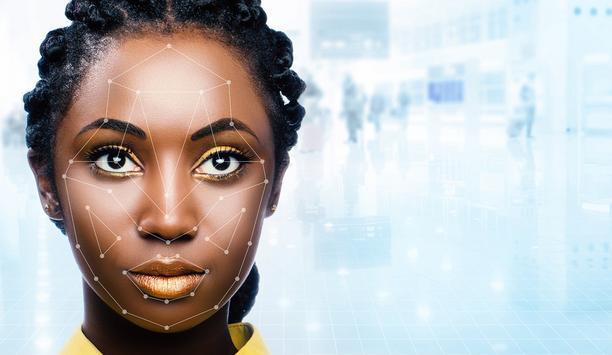
The rise of ethical facial recognition
Download
Protecting critical infrastructure through facial recognition
Download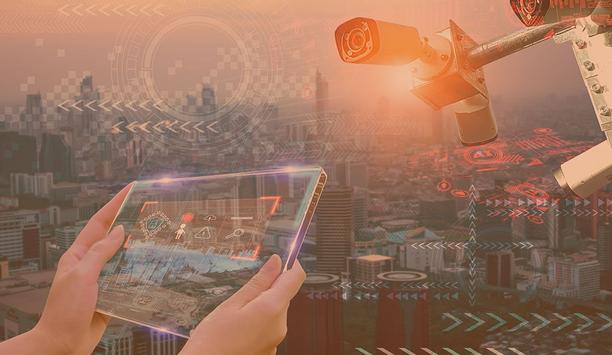
Six things to look for when adding AI cameras to your operation
Download
The security behind financial security
Download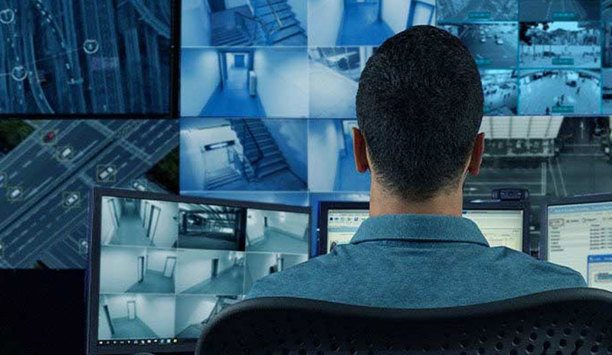
How to overcome the storage challenges of adopting surveillance AI
Download

Videos
Facial recognition systems: Manufacturers & Suppliers

Using artificial intelligence (AI) to automate physical security systems
Download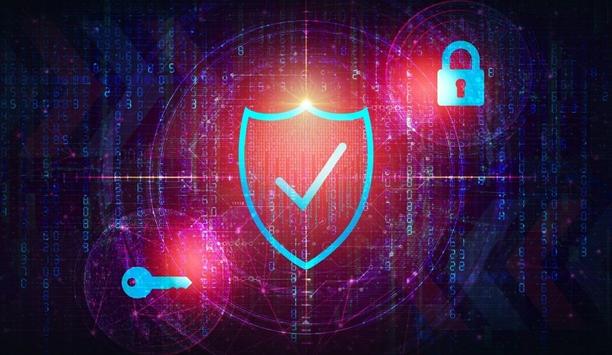
A modern guide to data loss prevention
Download
7 proven solutions for law enforcement key control and asset management
Download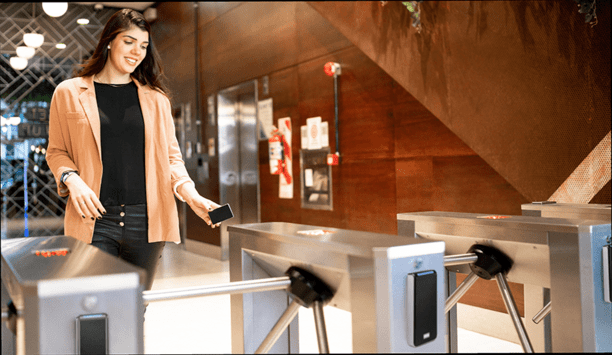
The truth behind 9 mobile access myths
Download
Access control system planning phase 2
Download











